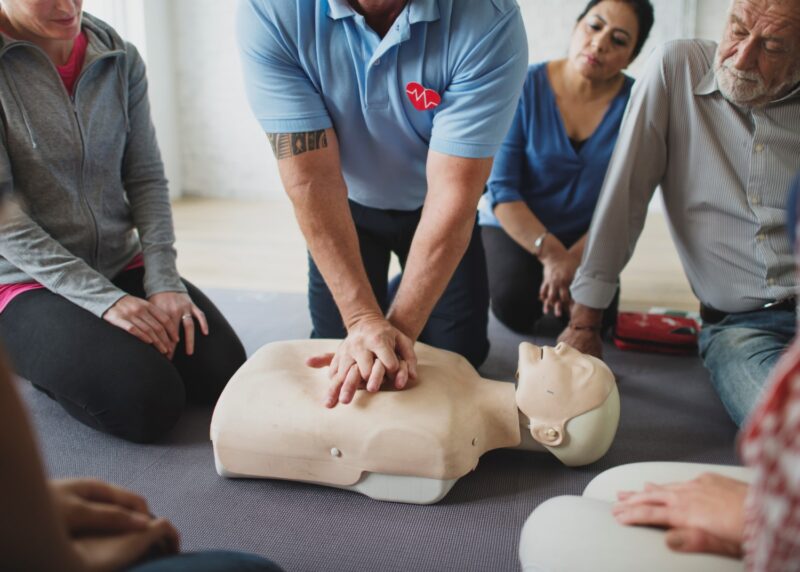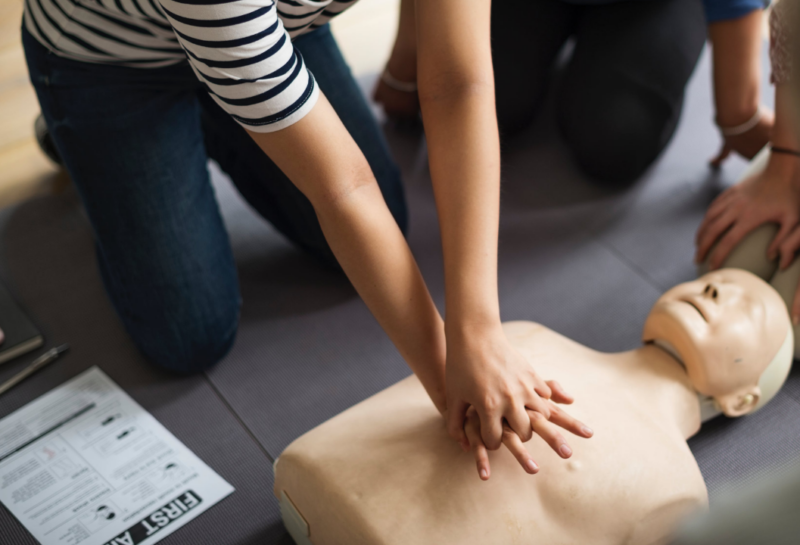Knowing how to perform cardiopulmonary resuscitation (CPR) can be a matter of life or death. If someone’s heart stops beating or they stop breathing, rapid chest compressions to mimic the heartbeat can encourage enough blood flow to keep the victim alive until emergency services can use more advanced, effective equipment.
Whether you’re a healthcare professional who needs to renew your basic life support skills or are curious about whether you should learn this life-saving measure, here are some of the most crucial reasons for anyone to learn CPR.
1. You’ll Know What to Do in an Emergency

Participating in a basic life support course through authorized training centers like Newcastle Training will teach you what to do if you were to witness a sudden cardiac arrest. Rather than standing back and waiting for someone more knowledgeable than you to step in and save a life, you can have the confidence and skills necessary to start performing life-saving measures.
2. You Can Save a Life
According to the CDC, more than 350,000 people experience cardiac arrest outside of a hospital setting each year, and nine in ten die. However, if you were to perform CPR within a few minutes of identifying someone experiencing a cardiac arrest, you might just double or even triple their chances of survival.
Once you have basic life support training, you’ll be able to identify someone experiencing a cardiac event by them being unresponsive and not breathing. You can then call 911 to have medical professionals on the way and perform CPR until they arrive.
3. You Can Help Vulnerable People

You can’t save everyone, but when you have valuable life-saving skills, you might one day end up in a situation that allows you to save a vulnerable member of your community. The CDC states that women may be less likely to receive CPR if they exhibit cardiac arrest in a public place, along with people in low-income, black, and Hispanic neighborhoods, compared to high-income white areas. Cardiac arrests don’t discriminate, and if you have basic life-saving skills, you might be able to help someone statistically less likely to receive life-saving care.
4. You Might Prevent Brain Death
When someone experiences cardiac arrest, the heart stops pumping blood to the brain and vital organs. When there is reduced brain blood flow, the victim can fall unconscious, with potential brain damage occurring within three minutes of inadequate blood flow. That damage can be irreversible within around nine minutes.
If you encounter someone experiencing a cardiac arrest, your CPR efforts might prevent that from happening. CPR keeps blood flowing around the body, which means vital organs, such as the heart, lungs, and brain, might be at a reduced risk of damage.
5. You Might Help the Victim Recover Faster

Studies have shown that CPR plus shock delivery with a defibrillator within five minutes of collapse can see survival rates of between 49% and 75%. Victims who receive CPR early might also recover faster than if they didn’t receive it in a timely fashion.
According to the same study, there was no significant difference in the number of patients resuscitated at the scene and those admitted alive to the hospital, but the number of people discharged alive from the hospital was much higher when bystanders initiated CPR. Just 22% of cardiac arrest victims were released alive compared to 43% of those who received CPR at the scene.
Knowing how to administer CPR and use an automated external defibrillator (AED) can be lifesaving. People with a first-aid certification are several times more likely to take action when they witness an emergency, so first-aid training is highly recommended. Although a certificate is valid only for two years, the skills and knowledge stay with you longer.
6. Anyone Can Learn CPR
Many people can be fearful of administering CPR when they aren’t trained medical professionals. While it’s always best to leave life-saving measures in the capable hands of experts, they aren’t always available immediately. You don’t have to be a professional to step in and perform CPR to save someone’s life. Anyone can learn how to perform CPR in a classroom setting or even by receiving instructions from 911 operators over the phone. Most of the time, CPR is a five-step process:
- Call 911 or have someone call else call
- Lay the person on their back to open their airway
- Check for breathing and start CPR if they aren’t breathing
- Perform 30 chest compressions and two rescue breaths
- Repeat CPR until paramedics or someone with an automated external defibrillator arrives
Of course, you could get instructed through the phone if it’s an emergency, but you can also attend classes to learn how to do CPR correctly and more comprehensively. Find an online CPR course with clear instructions and additional quizzes available. This will save you time and money without taking an offsite class.
7. It Can Make Home, School, and Work Safer

The more people who learn CPR, the safer everyone can be at home, at work, and even in school. About seven in 10 cardiac arrests happen at home, and not all home occupants know how to perform CPR to save their loved one’s life. If you receive CPR training and someone in your family experiences a cardiac arrest, you might be in a strong position to save their life.
The same rules apply to school students. There is at least one cardiac arrest event in one of 111 schools annually and one arrest per eight colleges. Many states require teachers to be trained in CPR, but other faculty members and even students can benefit from CPR training in case they ever have to use it.
Workplaces are also not exempt from cardiac events, with thousands reported each year. While many companies make it compulsory for at least a few employees to be trained in basic first aid and CPR, there can be value in multiple people receiving training across several departments. What’s more, business owners who invest in first aid training for their team can show their employees that they care about their health and well-being.
8. Improve Your Job Prospects
Many employers understand the importance of having employees with CPR training to assist in emergency situations. However, they might be less inclined to have their workers take time off work to undergo training. If you’re applying for jobs and have first aid training, including CPR knowledge, you might find that this experience is invaluable. Employers might see you as more desirable if they can rely on you to provide life-saving measures in an emergency.
Most people hope never to need to know how to perform CPR to save someone’s life. However, if you ever come across someone experiencing a cardiac event, your knowledge could be crucial for their survival. If you haven’t yet signed up for a basic life support course, now might be the right time to explore your options.

